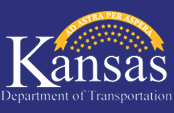| NEWS RELEASES |
"Put the Brakes on Fatalities Day" aims to save lives by increasing driving safety |
Oct. 4, 2001 (Release 01-128)
FOR IMMEDIATE RELEASE
News Contact: Kim Stich, (785) 296-3585
"Put the Brakes on Fatalities Day" aims to save lives by increasing driving safety
In the next 13 minutes your life probably wont change much. But during that time, a person somewhere in the United States will die in a vehicular accident. That adds up to more than 41,500 traffic fatalities a year. This startling fact is why numerous transportation organizations across the country are participating in the first "Put the Brakes on Fatalities Day" set for Wednesday, Oct. 10. The goal is to encourage everyone whether as a driver, passenger, pedestrian or cyclist to take extra caution each and every day, and especially Oct. 10, to prevent crashes from occurring. "Whether its always wearing a safety belt, paying extra attention while driving, passengers minimizing distractions in the vehicle or creating safer roadways, everyone can make an effort to reduce traffic fatalities," said Kansas Secretary of Transportation E. Dean Carlson. "If even one life is saved because someone heeded the message, then the day will be a success." Substandard road conditions and run-off the road crashes are a factor in 30 percent of all traffic fatalities. Continuing roadway improvements across the state such as wider lanes and shoulders, reflective signing and pavement markings, lighting and intersection upgrades are vital for highway safety, Carlson said. Motor vehicle crashes are the leading cause of death in the U.S. for people ages 6 to 27. The cost to society, besides the tragic loss of life, is estimated at $150 billion a year, or 2.2 percent of the Gross Domestic Product. "Following the speed limit and obeying all traffic regulations can greatly decrease your chance of being in an accident," said Kansas Highway Patrol Superintendent Col. Don Brownlee. "Last year, 461 people lost their lives in traffic crashes on Kansas roadways. Put the Brakes on Fatalities Day is a welcome addition to initiatives already in place to make our roads safer." Safety restraints, whether they be safety belts or child safety seats, are critical for increasing motor safety. More than 50 percent of the children under age five killed in crashes in 1999 were completely unrestrained. Safety belts can also reduce the risk of fatal injuries to front-seat occupants by 45 percent. If all vehicle passengers over age four wore safety belts in 1999, an additional 9,500 lives could have been saved. Do your part to participate in this national event. Buckle up. Be alert. Dont drink and drive. Obey all traffic regulations. Coming home alive sure beats becoming a statistic.
This page last updated 10/08/01

